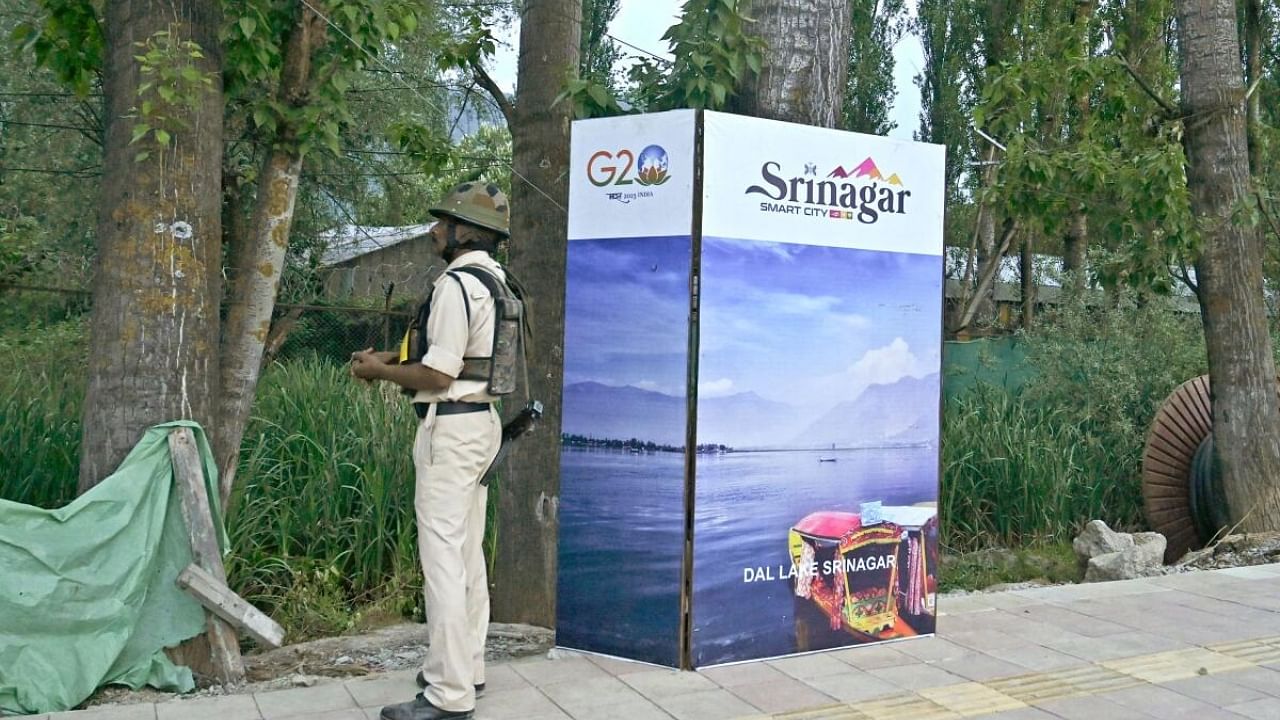
While India has remained focused on events and activities related to the G20 and the Shanghai Cooperation Organisation (SCO), internal security challenges are resurfacing. Recent events point to the revival of these challenges.
Firstly, the developments in Punjab, including the rise and arrest of Amritpal Singh, indicate that the pro-Khalistan elements are attempting to stage a comeback. Khalistani activities have increased in Canada, Australia, and Britain as well.
Secondly, the Naxals attacked security forces in Chhattisgarh. Naxal attacks just before the onset of the monsoon are a known tactic, as retaliatory anti-naxal operations become difficult in the rainy season.
Thirdly, the recent terror attack in the Rajouri district of Jammu and Kashmir was a reminder that despite the ceasefire with Pakistan, terrorism will continue to pose a serious security threat. Finally, the eruption of violence in Manipur and the deployment of central security forces pointed towards the volatility and complexity of the Northeast. The instability in Myanmar since the military coup and the refugee flows have already been a challenge to the security of the Northeast.
Four key pointers indicate that there indeed is a revival of internal security threats:
India has faced serious internal security problems since independence. Compared to the current situation, the magnitude of these challenges was greater in the 1980s and early 1990s when the active support of China and Pakistan for the various armed outfits intensified the challenge for India.
In the last three decades, with the steady accumulation of economic and military power by India, the seriousness of these challenges has come down progressively. However, as the strategic environment around India worsens and security challenges on the western as well as northern peripheries intensify, internal security problems too seem to be making a comeback.
One of the important motivations behind these attacks and their specific timing is to prick the government’s narrative of a strong India and underscore the severity of challenges, especially in the year when the global spotlight is on the country. India plans to hold a G20 meeting in Kashmir, and the attack in Rajouri was a reminder that the problem of Kashmir remains alive. For India, the Rajouri attack can be deployed to once again highlight the problem of cross-border terrorism emanating from Pakistan.
Internal security challenges are primarily political in nature, and therefore, a military response is limited in its effect. This is particularly true in the context of the instability in Manipur. The show of force was useful to stop the violence and bring back stability and normalcy. However, ethnic and religious fault lines are a constant feature of politics in the Northeast. Therefore, moving forward, the political leadership will have to show deftness and tact to bridge the gap between communities and heal the wounds. Instability in a strategically located border state like Manipur aggravates the already-existing, complex security challenges in the Northeast. The assertive military posture of China along the Arunachal Pradesh border, looming elections and political instability in Bangladesh, and the intensifying conflict in Myanmar exacerbate India’s security challenges in the Northeast.
Finally, as Pakistan stumbles into even greater instability and violence, the temptation to create trouble in Kashmir cannot be ignored. For a divided political class and discredited military establishment, Kashmir will perhaps be a unifying factor as well. For India, normalcy in Kashmir is of utmost importance as it seeks to hold a G20 meeting in Srinagar, which sends a message to China and Pakistan that the world has moved on from the issue of Kashmir. However, precisely for this reason, for Pakistan and its terror proxies, the idea of launching terror attacks will be an attractive proposition. Even for China, keeping up the military pressure on India in eastern Ladakh serves to highlight the magnitude of India’s security challenges in Kashmir.
Hence, for India, internal security challenges are here to stay. Addressing the socio-economic and political roots of grievances in the context of Punjab, Naxalism, and the Northeast is a long-term solution.
In Kashmir, as internal and external challenges get intertwined, managing the security situation seems to be a practical option. Moving forward, while India seeks to improve its position externally, the necessity of keeping a close vigil on the internal security front cannot be underestimated.
(The writer is an assistant professor at Manipal Academy of Higher Education.)